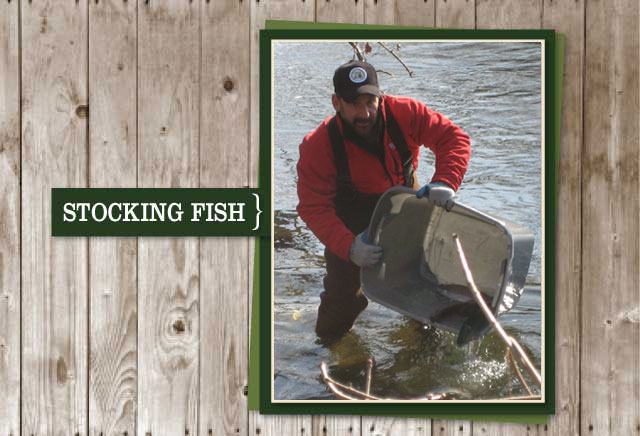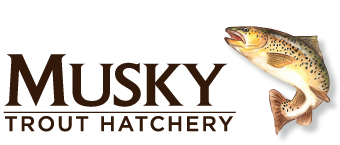Stocking

We offer many species of fish that a pond owner can purchase for stocking into his or her pond. A number of these species are better suited for the pond environment than others. The intention of this fact sheet is to provide information on which fish species are recommended for stocking.
Recommended Species
Largemouth Bass
This species is the best predator for stocking into ponds to maintain a healthy fish community. They have evolved to reproduce and prey effectively in warm, vegetated areas of lakes. When young, largemouth bass prey on microscopic animals but quickly switch to a diet of fish and crayfish.
Bluegill
Bluegills also function well in shallow, warm, vegetated areas of lakes and therefore are the most commonly stocked species to provide food for largemouth bass. They are prolific spawners and can quickly become stunted if sufficient numbers of bass are not present and/or the pond becomes choked with vegetation. Young bluegill eat microscopic animals, while adults prey on insects, fish eggs, small crayfish, and occasionally small fish.
Channel Catfish
Channel catfish grow very well in ponds. They will not reproduce in ponds unless containers are provided for them to spawn in.
Fathead Minnow/Golden Shiner
Their populations decline dramatically in the presence of largemouth bass. Their stocking is recommended in two situations. In a new pond, stocking a minimum of 1,000 adult minnows or shiners per acre will provide food for stocked bass until bluegills and/or redear sunfish can spawn and produce young for bass to eat. The second situation is in ponds where the owner only wants to fish for largemouth bass. Stocking a minimum of 1,000 adult minnows or shiners per acre on several occasions throughout the year can result in a quality bass fishery.
Grass Carp
This species is used primarily to control submerged vegetation problems. Grass carp grow and survive well if the plant species present are those they will readily eat.
Yellow Perch
Yellow perch are a frequently stocked species into ponds. They tolerate warmer water and prefer vegetated areas, conditions common in ponds. However, reproduction is highly variable from year to year, and they eat identical foods that bass and bluegills eat.
Black and White Crappie
Each year, many of largest crappies are caught in ponds, so it is understandable that many pond owners want to stock them. However, both crappie species are unpredictable in ponds. In the best case scenario, the stocked crappies grow well but reproduce poorly and do not overpopulate the pond. Frequently, the opposite happens. Reproduction is high and small crappies overpopulate. They prey heavily on fry bluegills and bass, and populations of these desirable species decline. When stocking crappies, it is recommended that a high adult bass density be maintained to crop off small crappies should they become abundant.
Trout
Trout will survive in ponds from mid-October through April because of their need for cold water. Some ponds are too warm for their survival during summer. Some pond owners stock them in fall to provide a winter fishery, and hope nearly all are caught by the end of April.
Summary
Years of research and experience with fish stockings have demonstrated that largemouth bass and bluegills are the two species most suitable for stocking ponds. Redear sunfish and channel catfish are stocking options that in most instances perform well for the pond owner. Grass carp can be stocked if vegetation control is desired and minnows will provide food until the sunfish species begin to reproduce.
